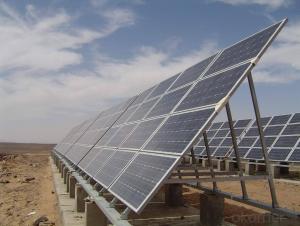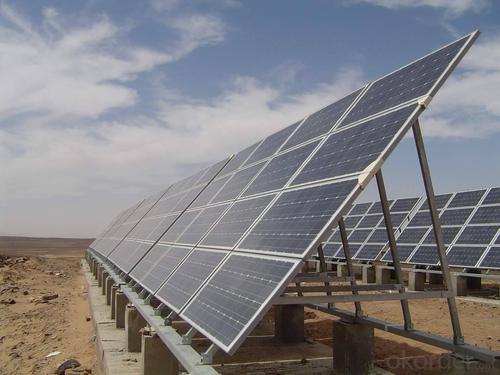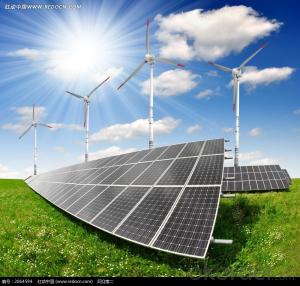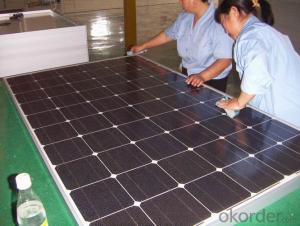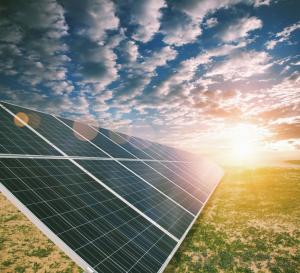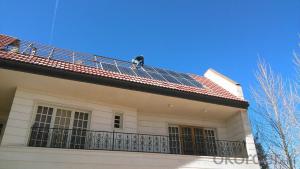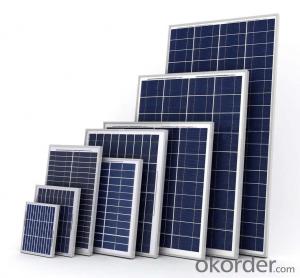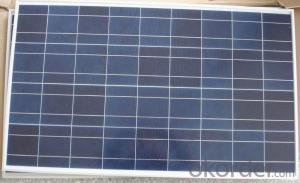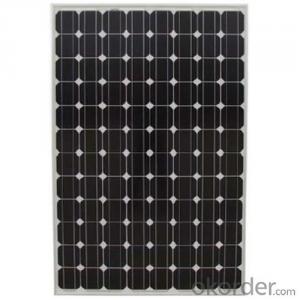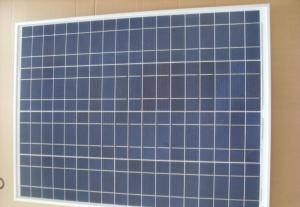Rochester Solar Panels - CE and TUV Approved High Efficiency 50W Poly Solar Panel
- Loading Port:
- Shanghai
- Payment Terms:
- TT OR LC
- Min Order Qty:
- 10000 watt
- Supply Capability:
- 20000000 watt/month
OKorder Service Pledge
OKorder Financial Service
You Might Also Like
Specification
Product Description:
1.Structure of Polycrystalline Silicon Solar Panel
I. High efficiency crystalline silicon solar cell. Even if under the weak light, the solar module can produce maximum power output.
II. Tempered glass (toughened glass): Anti-reflecting coating and high transmission rate glass increase the power output and mechanical strength of solar module.
III. EVA and TPT: Using high quality EVA and TPT to prevent destroying and water.
IV. AI frame: Without screw, rner connection. 6 holes on the frame can be installed easily.
V. Junction box: Multi function junction box with water proof.
VI. Long lifetime: ≥25 years; Less power decrease.
VII. Good performance of preventing from atrocious weather such as wind and hails.
VIII. Resisting moisture and etching effectively, not effected by geology.
IX. The certificate issued by international authority: UL, TUV, IEC, CE.
2.Characteristics
1)Manufactured according to international quality and Environment Management
System (ISO9001, ISO14001)
2)High efficiency crystalline silicon solar cells
3)High transmission Iow iron tempered glass, strong mechanical resistance
4)Anti-ageing EVA and excellent anti-climate back sheet
5)Anodized aluminum frame improves load resistance capabilities for heavy wind loads.
6)Standard waterproof junction box
7)High endurance to different weather
8)Good and friendly package with less transportation and storage space.
3.Warranty
1)10 years limited manufacturing warranty
2)10 years for 90% of warranted minimum power
3)25 years for 80% of warranted minimum power
4.The Pictures of Solar Panels
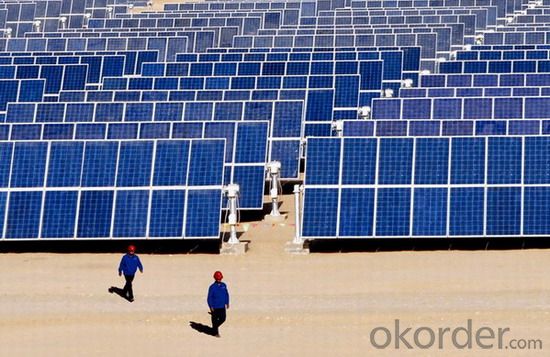
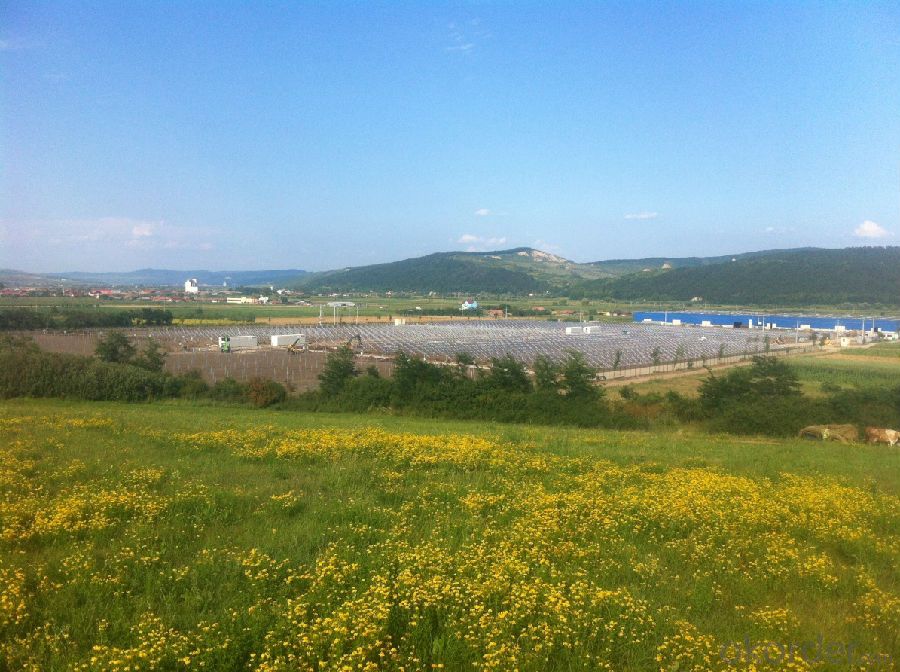
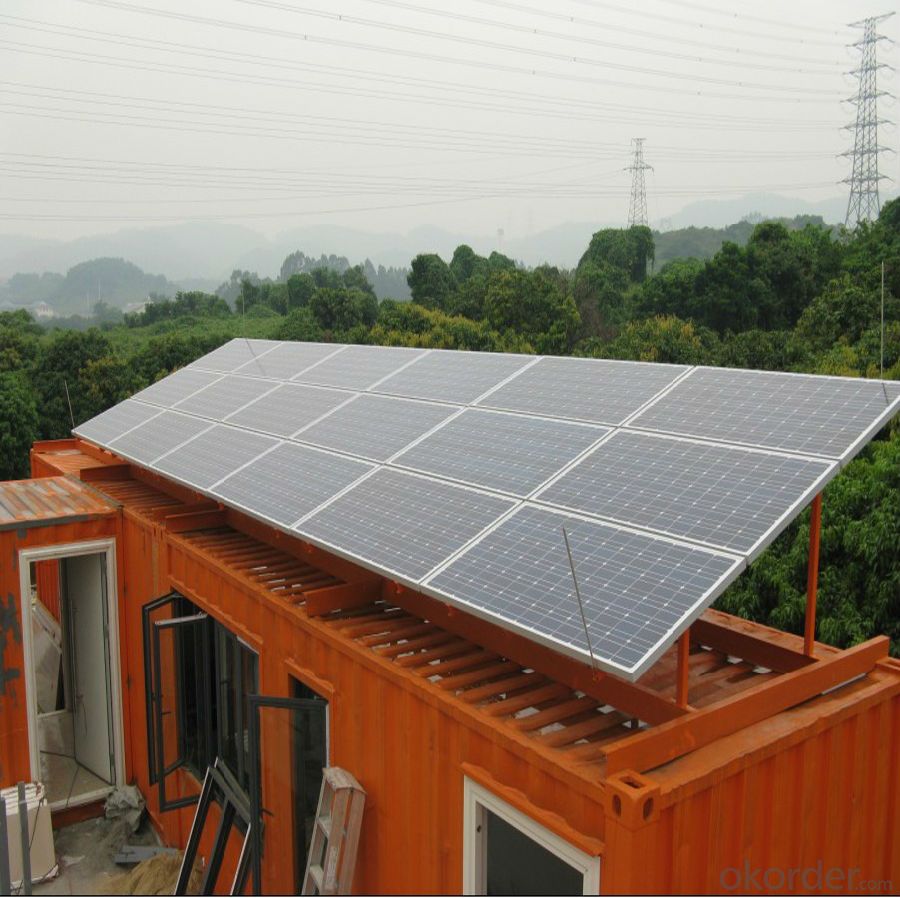
5. Production Flow
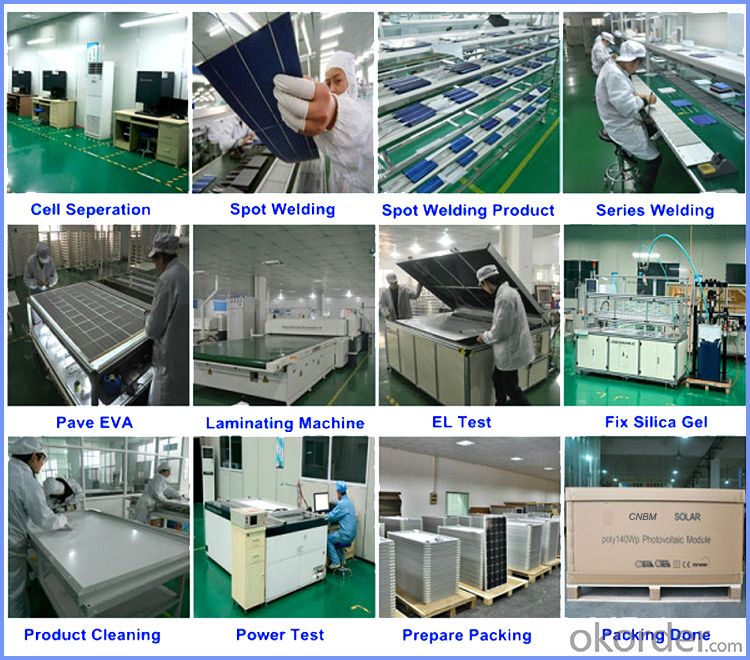
6. Packing Details
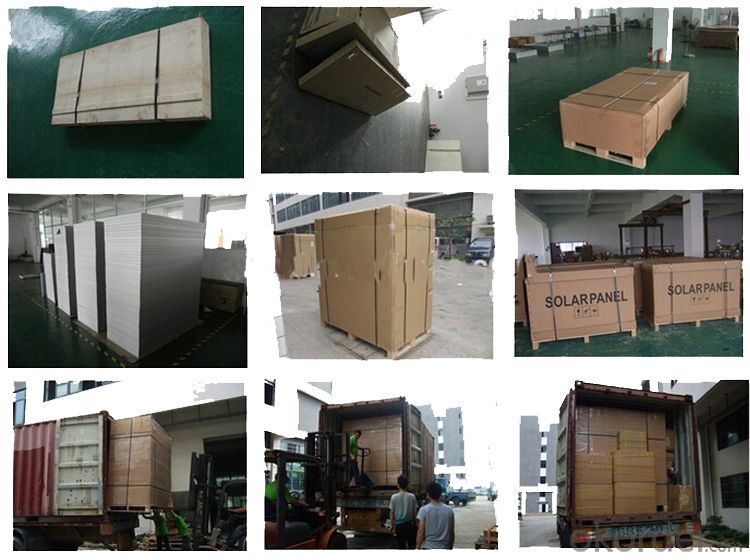
7. Use For
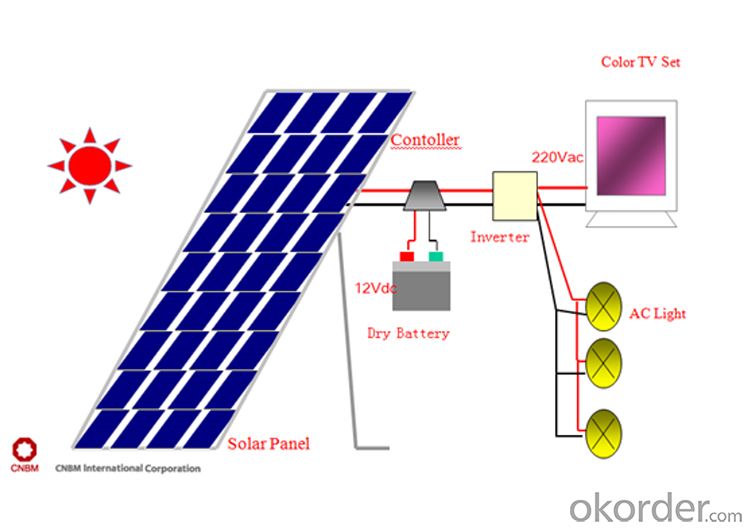
- Q: I have two solar panels that were going to be trashed at work. I want to use them to charge batteries on my RV but i noticed they put out around 20 volts in direct sunlight. So i am wondering: -isn't this way too much voltage for a 2 volt system? -do a need some sort of a regulator connected to keep them from overcharging?
- You can use them without the regulator . Just make sure you use blocking diodes so the the power does not flow back into the panels . You can get those at radio shack of some electronic store or off OKorder for a few bucks .
- Q: How do solar panels affect wildlife?
- Solar panels can have both positive and negative effects on wildlife. On the positive side, solar panels can provide a habitat for certain species, such as birds or insects, as they can create shaded areas or serve as perches. Additionally, solar farms often have vegetation underneath or around the panels, which can attract and support a diverse range of wildlife. However, there are also potential negative impacts to consider. Large-scale solar projects can disrupt or destroy natural habitats, leading to the displacement or loss of certain species. Additionally, solar panels can pose a risk to birds and other flying animals if they are not properly designed or installed. Glare from the panels may also impact wildlife behavior or migration patterns. Overall, it is important to carefully plan and manage solar installations to minimize any negative impacts on wildlife while maximizing the benefits they can provide.
- Q: I am writing a lab for school and I need to know who invented solar panels? Any help would be great.
- Many people think that solar power is a new concept. That couldn’t be farther from the truth. Harnessing power from the sun has been dated back to ancient civilizations. The below link is a timeline researched by the Department of Energy that outlines the major historical milestones of solar power.
- Q: Are solar panels a good investment?
- Yes, solar panels are a good investment. They provide long-term financial benefits through reduced energy bills, potential tax incentives, and increased property value. Additionally, they contribute to a cleaner environment by reducing reliance on non-renewable energy sources.
- Q: Can solar panels be installed on parking lots or garages?
- Yes, solar panels can definitely be installed on parking lots or garages. In fact, these areas are often ideal for solar panel installations due to their large, open spaces and exposure to sunlight. Installing solar panels on parking lots or garages not only helps generate clean energy, but also provides shade and protection for vehicles, making it a practical and sustainable solution.
- Q: What is the warranty on solar panels?
- The warranty on solar panels can vary depending on the manufacturer and the specific product, but it typically ranges from 10 to 25 years.
- Q: Can solar panels be used for powering a farm or agricultural operation?
- Yes, solar panels can definitely be used to power a farm or agricultural operation. Solar energy can be harnessed to generate electricity, which can then be used to power various farm activities such as irrigation systems, lighting, machinery, and other electrical needs. By utilizing solar panels, farmers can reduce their dependence on traditional energy sources, lower their operating costs, and promote sustainability in their operations.
- Q: I'm doing a science fair experiment with a tiny two-inch solar panel that only gives off like .5 volts of energy, but I need to know how many volts an average sized solar panel (like one you'd get to run your house) would produce. And how many panels do people usually get?
- 2 volt and 24 volt are both common sizes. They are rated in voltage and watts. So you add the watts of the panels and buy enough to produce the amount of watts you need. For example, if you need 400 watts of power at 2 volts, you would buy four 00 watt 2 volt panels and connect them in parallel.
- Q: Can solar panels be used to power a construction site?
- Yes, solar panels can be used to power a construction site. By harnessing the sun's energy, solar panels can generate electricity that can be used to power various tools and equipment on the site, reducing the reliance on traditional power sources and lowering carbon emissions. Additionally, solar panels can be easily installed on temporary structures or mounted on portable frames, making them a viable and sustainable option for powering construction sites.
- Q: The inverter I am using gets the required 2 DC volts from the solar panel, but fo some reason it just won't output the 0 AC voltage. When the inverter is hooked to a car battery, it works just fine off the same 2 DC rating. Help me out please...
- Solar panels output a very small amount of current. Even though you're getting 2V from the panels, you aren't getting enough amperage to power even the inverter itself, let alone anything plugged into the inverter. Car batteries are able to be used with inverters because they can crank out enough amps to power the inverter and whatever is plugged into it. Inverters only step up voltages and change DC to AC. They do not increase power (wattage) potential. If you want to plug in a 20W appliance into the inverter, the 2V source must be able to deliver 20W of power regardless of voltage. In pretty much everything solar powered, the panels are used in conjunction with batteries. The solar panels slowly recharge the batteries. The batteries are where most of the power comes from. Nothing is driven directly from the solar panels themselves unless the power requirement is low enough, such as a calculator. Solar panels will have an output rating in watts (W). If the wattage of your inverter plus whatever you plug into it is lower than the panel's output rating, then it can power it directly, provided you have 00% light input into the panel.
Send your message to us
Rochester Solar Panels - CE and TUV Approved High Efficiency 50W Poly Solar Panel
- Loading Port:
- Shanghai
- Payment Terms:
- TT OR LC
- Min Order Qty:
- 10000 watt
- Supply Capability:
- 20000000 watt/month
OKorder Service Pledge
OKorder Financial Service
Similar products
Hot products
Hot Searches
